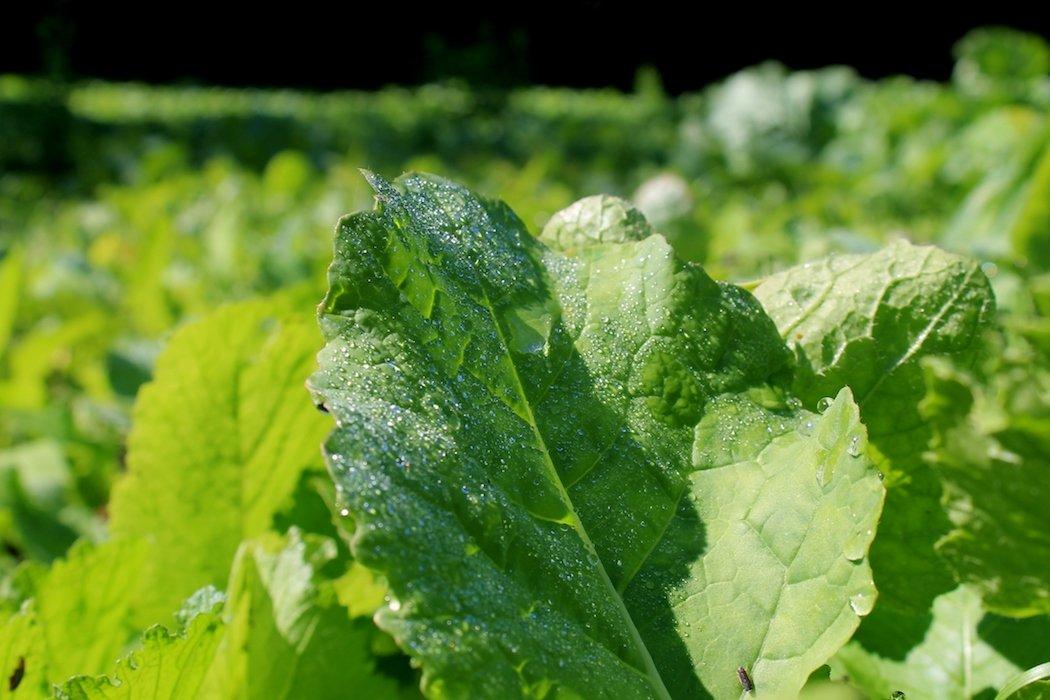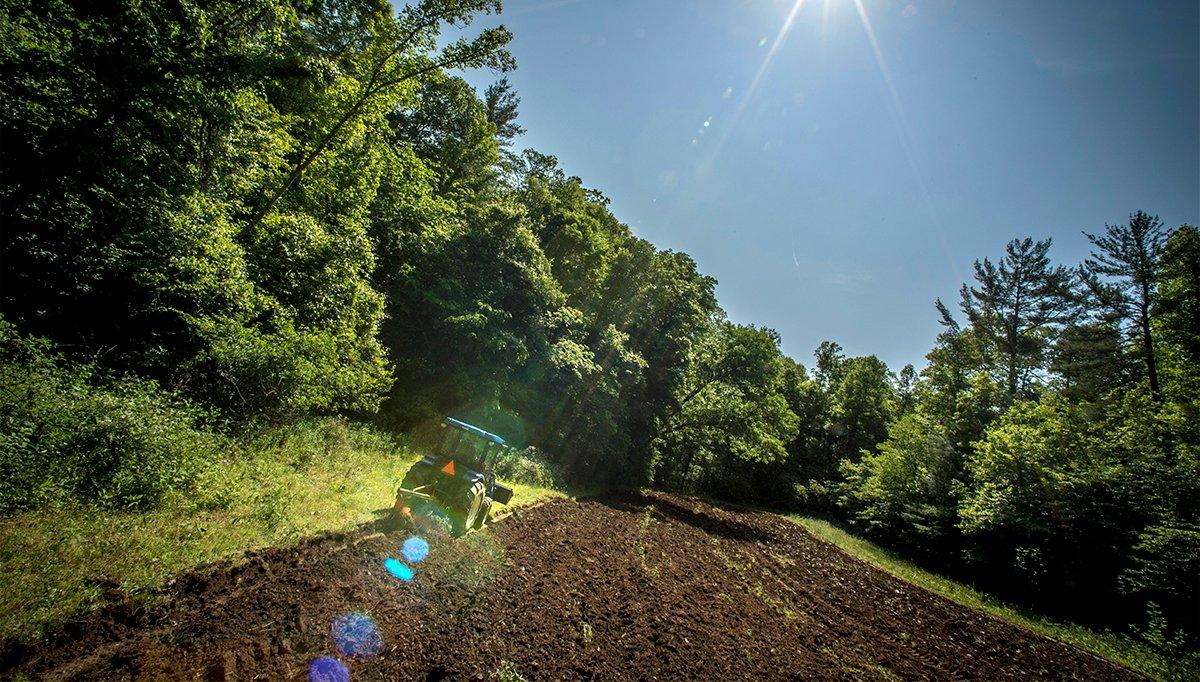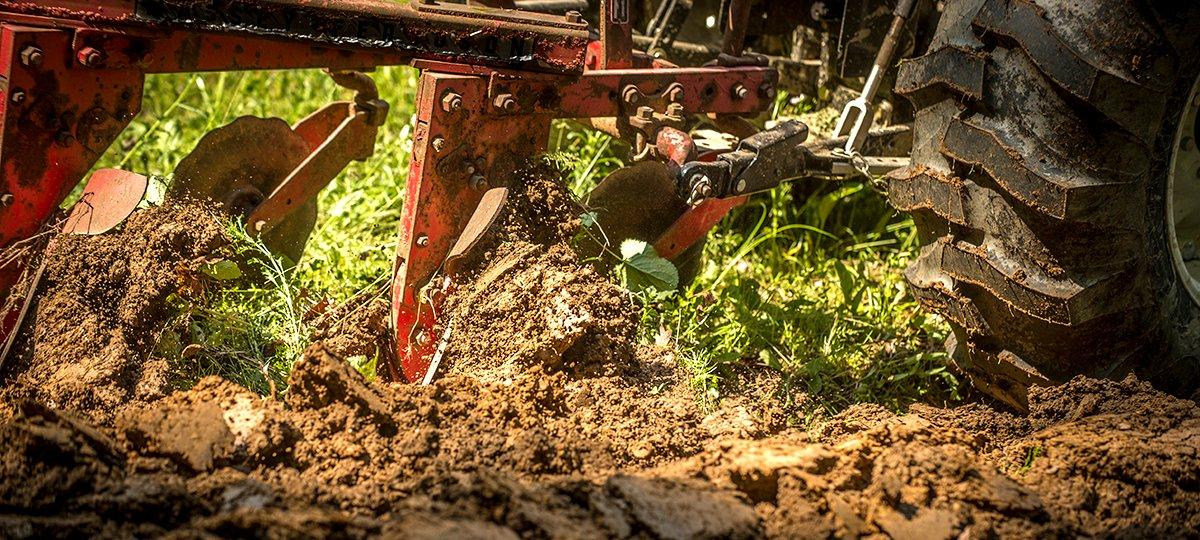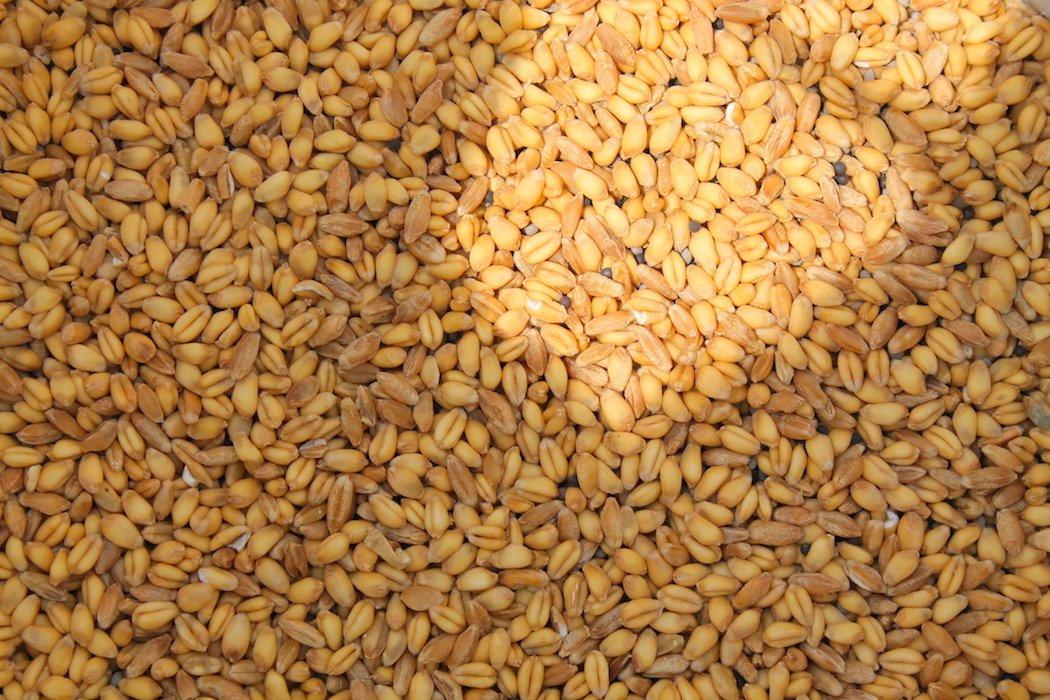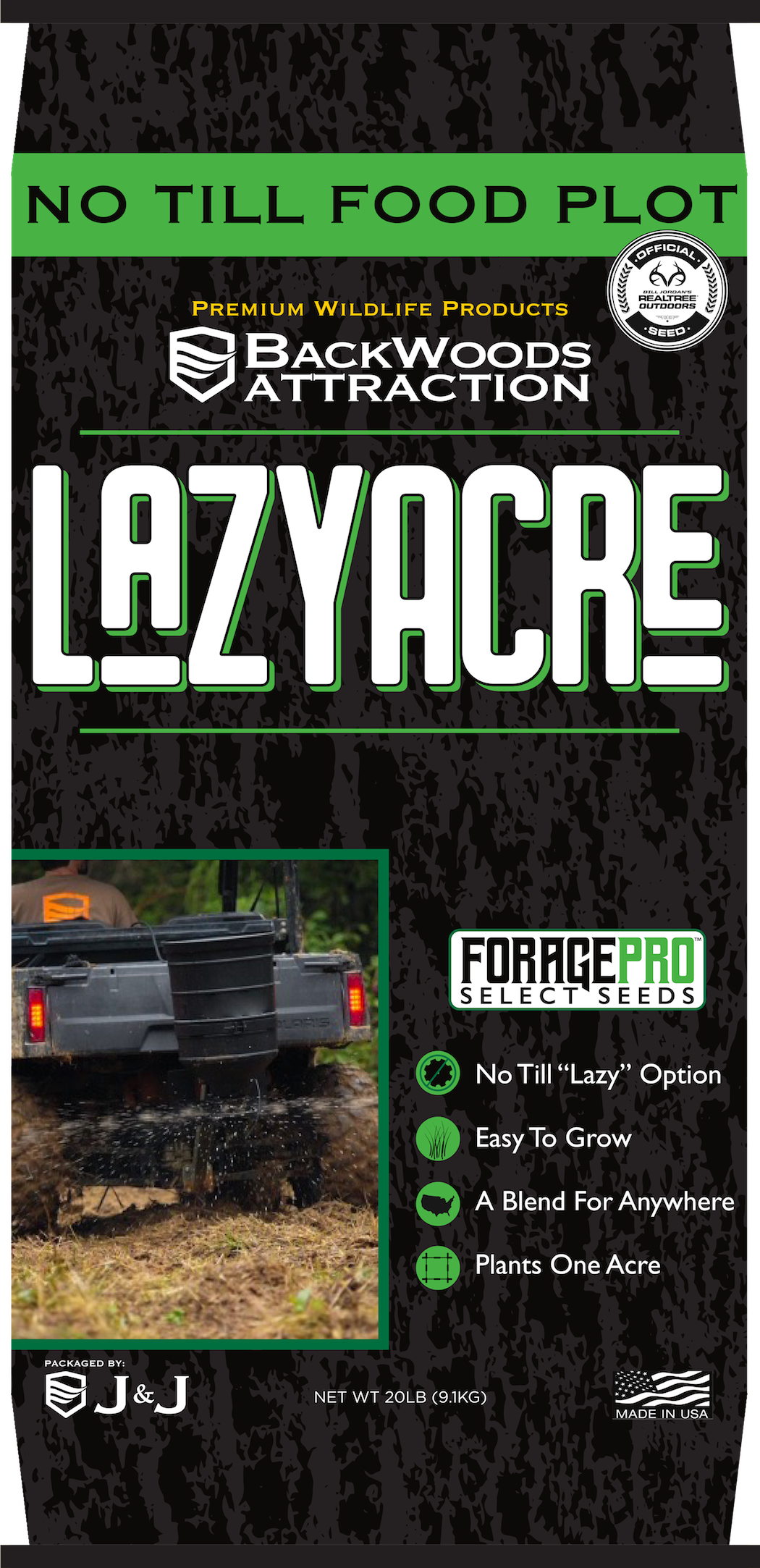Who doesn’t like seeing – and shooting – more and bigger deer? Ultimately, that’s the purpose of a food plot. Holding deer on your hunting ground throughout the season protects them from neighboring hunting pressure, and that helps to improve the herd’s age structure and increases your own odds of success. Providing the nutrients deer need on a seasonal basis is part of being a good land steward, too. But what should you plant? Few individual food plot choices provide full-season forage. Enter food plot combos. The goal here is to provide as much food for as long as possible, and timing it strategically with seasonal demands, so deer don’t have to wander off.
The Combo Mentality
Understand why combos matter and which ones make the most sense. For example, beans and corn only actively feed deer 60 to 75% of the season, location depending. That leaves noticeable gaps where food sources aren’t available or viable in your plots. What will deer do when that happens? Leave.
The solution is to plant available areas in things that offer more diverse seasonal attraction. For example, plant cereal grains on one half of a plot and broad-leaf greens on the other side. This prevents forage gaps, limits competition between plant species, maximizes forage and keeps deer coming in all season long.
Another good strategy is filling the gaps with same-plot-compatible food sources. A few weeks after initial late-summer and early fall plantings, over-seed grain-based plots with winter rye or peas to cover any bare dirt where seeds didn’t germinate. The originally planted seeds are established and continue growing while a thick layer of new growth shoots up beneath.
I’ve been a farmer and deer hunter my entire life. I’ve planted countless combinations of food plot seed options, including the five listed below. These combos will hold deer throughout the hunting season’s entirety. Check out different options available from Backwoods Attraction.
1. Winter Peas and Soybeans
This is my favorite food plot blend. Soybeans are great early and late. Winter peas are good for most of the season and will keep deer coming in during October and November, when beans are less attractive.
- Protein Levels: 25 to 30% (winter peas) / 25 to 30% (soybeans)
- Carbohydrate Levels: Medium (winter peas) / high (soybeans)
- Preferred pH: 6.2 to 7.0 (winter peas) / 6.0 and up (soybeans)
Winter Peas: These are nutritious for deer and a great draw throughout most of the season. Peas provide hunting opportunities and help provide nutrition when food sources are limited the most. They’re a cool-season annual legume that’s high in protein (up to 30%) and can grow as tall as 4 to 5 feet. This provides a lot of forage.
Peas grow best in a pH range of 6.2 to 7.0. If broadcasting, plant at a rate of 50 to 60 pounds per acre. If drilling, plant at a rate of 30 to 40 pounds per acre.
Soybeans: The soybean is the king of deer feed. It’s high in protein (approximately 25-30%), offers a good number of carbohydrates, and is highly palatable. Furthermore, deer don’t have to work hard to eat it. It sits at an easy-to-reach height, and it provides both green forage and grain. Deer target the leafy plant earlier in the season, and then the actual soybeans after they’ve hardened later in the season.
Optimum soil pH for soybeans is 6.0 and higher. If drilling the seed, 40 to 60 pounds per acre is sufficient. When broadcasting, 60 to 80 pounds per acre is the magic window.
Killer Combo Tip: If planting as a blend, drill in soybeans in late spring or early summer. Use exclusion fences to prevent over browsing. Closer to deer season, broadcast peas into the beans, especially in the bare areas.
2. White Clover and Oats
It’s hard to beat the oats-and-clover combo. This green-on-grain duo is perfect for planting in tight corridors. These plots are a little more resistant to over browsing than option No. 1, too.
- Protein Levels: 18 to 32% (white clover) / 15 to 18% (oats)
- Carbohydrate Levels: Medium (white clover) / high (oats)
- Preferred pH: 6.0 to 7.0 (white clover) / 5.0 and up (oats)
Clover: White clover is probably the best, and most popular, legume food plot choice for deer. It’s highly nutritious, and fairly hardy. But it’s becoming more overlooked than it once was due to newer seed varieties on the market. Other clover options include Ladino and red clover. Despite common belief, Alyce clover is not part of the clover family.
White clover requires less maintenance than many other plantings, too. It can last from three to five years with minimal maintenance, and is pretty disease-resistant. Red clover typically only lasts two years and is more susceptible to risks.
White clover grows best with a pH range of 6.0 to 7.0. Lime and fertilize as needed. Prepare the seedbed by disking up the desired area. If broadcasting, plant 7 to 8 pounds of seed per acre. If drilling, a little less will work. Inoculate the seed prior to planting if you don’t have access to a pre-inoculated product.
Oats: This cool-season forage is extremely attractive on those cold, late-fall and winter days. Oats are an excellent choice for deer hunters who like to plant cereal grains. They’re easy to grow, and a good buffer for young clover seedlings.
Oats are high in carbohydrates, which help deer generate energy to stay warm during cold snaps. Plus, oats have 15 to 18% protein, depending on the variety. Some are higher than others. Like many cool-season food plot choices, oats are a target due to their high levels of glucose. Some oat varieties have higher levels than others. Be aware of that when buying seed.
As always, begin with a soil test. Apply fertilizer and lime as needed. If broadcasting, seed at a rate of 100 to 125 pounds per acre. If drilling, plant at a rate of 80 to 100 pounds per acre.
Killer Combo Tip: If planting as a blend in the same plot, reduce seeding rates by slightly more than half of what’s called for when planting them solo.
3. Beets and Wheat
Wheat is planted in massive amounts across much of the country. So are beets. It’s the perfect one-two punch for attracting and retaining deer throughout the season.
- Protein Levels: 18 to 25% (beets) / 18 to 20% (wheat)
- Carbohydrate Levels: Medium (beats) / high (wheat)
- Preferred pH: 6.0 to 6.7 (beets) / 6.0 to 6.8 (wheat)
Beets: Sugar beets have upwards of 20% sucrose, and that sugary flavor is highly sought after by deer, especially in the fall and winter months, as they’re building up fat stores.
Individual beets can reach weights of 2.5 to 3 pounds in good stands, but weights of 1.5 to 2 pounds are more common. Deer consume the leafy plants as well as the roots, so beets provide large amounts of forage per acre.
Beets can be planted in a wide range of soils. However, they do best in well-drained, loamy soil. You need a soil pH range of 6.0 to 6.7 to grow beets well. If broadcasting, plant at a rate of 9 to 10 pounds per acre. If drilling, plant at a rate of 7 to 8 pounds per acre.
Wheat: This cool-season cereal grain is highly digestible, has 18 to 20% protein and holds a lot of nutritional value. But wheat has a bad side. It doesn’t provide as much forage as most other plants do. Because of this, many hunters and land managers plant wheat alongside something else — like beets.
Look for a pH of 6.0 to 6.8 and higher for the best results. Adjust pH as needed. Then, since wheat demands nitrogen-rich soil, after planting, apply nitrogen a few weeks after germination to increase overall production.
If broadcasting, do so at a rate of approximately 100 pounds per acre. If drilling, approximately 75 pounds per acre should do.
Killer Combo Tip: This is an excellent pairing simply because they are both high in protein, relatively strong in carbohydrates and are easy to grow.
4. Cereal Rye and Radishes
Rye and radishes are an excellent combination. It’s hard to top this option, especially in the northern half of the country where these species really thrive.
- Protein Levels: 15% (cereal rye) / 25 to 32% (radishes)
- Carbohydrate Levels: High (cereal rye) / low (radishes)
- Preferred pH: 6.3 to 6.8 (cereal rye) / 6.5 and up (radishes)
Cereal Rye: Not to be confused with rye grass, cereal rye is a great food-plot option for wildlife, particularly for the late season. While it isn’t necessarily high in protein (15% crude protein on average), it is high in carbohydrates, which deer crave during the colder months. Cereal rye generally grows anywhere from 3 to 5 feet tall, and as an annual grass species, is pretty easy to establish.
A happy-medium pH range of 6.3 to 6.8 is best. Fertilize and lime as needed. Average seeding rates will range from 55 to 75 pounds per acre. If broadcasting, plant at an even higher rate — perhaps as much as 100 to 150 pounds per acre.
Radishes: Radishes are part of the brassica family, along with turnips, canola and rapeseed. They’re a popular food-plot choice throughout most of the country.
Like most brassicas, radishes are consumed in two stages: first the leaves, and then the roots. Deer will eat radish leaves almost immediately after germination. Later in the fall, cooler weather will increase the glucose levels in the leaves, and deer will begin hitting them even harder. Once the leaves have been browsed all the way down, deer often eat the root — especially in late winter when food sources are limited.
Thoroughly disk the food plot and produce a nice, firm seedbed. If broadcasting, plant at a rate of 10 to 11 pounds per acre. If drilling, plant at a rate of 8 to 9 pounds per acre.
Killer Combo Tip: These two options have very similar pH requirements. This makes the fertilizing and liming process much simpler.
5. Chicory and Turnips
Need two sure-fire plant species that are easy to grow? Chicory and turnips are solid bets. They aren’t challenging to keep alive and deer flock to them.
- Protein Levels: 28 to 30% (chicory) / 15 to 22% (turnips)
- Carbohydrate Levels: Medium (chicory) / low-medium (turnips)
- Preferred pH: 5.8 to 6.8 (chicory) / 6.0 and higher (turnips)
Chicory: This perennial is attractive forage, especially during the early season. It’s highly digestible and contains approximately 28 to 30% protein. Chicory is one of the best candidates for food plot combos. Once mature, it can exceed 4 to 5 feet in height.
Chicory prefers a soil pH of 5.8 to 6.8. Work the ground up and prepare the seed bed with a disk. Then, if drilling the seed, plant at a rate of 4 to 5 pounds per acre. If broadcasting, plant at a rate of 6 to 7 pounds per acre.
Turnips: Like other brassicas, turnips offer food sources in two stages: first the leafy plant, and then the turnip (root) itself afterward. Turnips provide from 15 to 22% protein, they’re highly digestible, and yields are generally high.
While deer begin eating turnips as early as germination, don’t expect peak consumption during the early season. In areas with other quality food sources, deer typically don’t hit them very hard until mid-October to early November. Most brassicas are attractive because of one thing: sugar. The first hard frost causes a chemical reaction in the plant that encourages significant increases in glucose. This once-bitter plant suddenly becomes sweeter. Deer hit it hard once that happens.
Soil samples are key. Turnips do best with a soil pH above 6.0. Lime and fertilize as needed. Spray. Wait. Then work the soil with a disk. If broadcasting, plant at a 10- to 12-pound-per-acre seeding rate. If drilling, plant approximately 7 to 9 pounds per acre instead.
Killer Combo Tip: These two plants are more resistant than most to over browsing. Use this combo in areas with higher deer densities.
Grub Bonus: Food Plot Screens
A food plot screen is the final step in creating a quality plot that deer will use during daylight hours. They make deer more comfortable entering the open during daylight hours because they can’t see outside of the food plot, and nothing else from the ground level can see in. Planting this as a buffer around the perimeter softens up hard edges and makes the transition from other habitat types to your food plots much smoother.
There are certain plant species that work best as screens. My personal favorite is Egyptian wheat. This species is an annual, meaning it completes its life cycle in single season. Therefore, you don’t have to worry about it taking over a property.
Other things you can use include:
- Sorghum Sudan grass
- Switchgrass
- Prairie Cordgrass
- Little or big bluestem
- Poplars
- Cedars
- Spruce
To incorporate this step, simply plant a 5-yard-wide strip around the perimeters of your food plots and anywhere else you need to shield from prying eyes (deer, human or otherwise). Screens are also great for concealing both entry and exit routes, too (and they can be more permanent in the forms of soil berms hinge-cuts and brush piles).
Food plots help deer and other wildlife. But planting them with a strategy in mind will ensure your hard-earned dollars don’t go to waste. Plant with purpose, and watch the wildlife reap the rewards. And you will too.
Don’t Miss: How to Plant Food Plot Screens
Are you a hunter wanting to learn how to accomplish your goals? Check out our stories, videos and hard-hitting how-to’s on food plots and land management.
Follow us on Facebook.






